- What is Multi Jet Fusion (MJF) 3D printing?
- How was MJF developed?
- How does Multi Jet Fusion (MJF) work?
- What materials does MJF use?
- How does MJF post-processing work?
- What are the advantages of MJF?
- Why is MJF ideal for manufacturing end-use parts?
- MJF vs SLS 3D printing: what’s the difference?
- MJF vs. Injection Molding: which is better for your application?
- What are examples of Multi Jet Fusion in action?
- MJF: Handy tips and tricks
- Frequently asked questions
Today, designers and engineers have numerous options for 3D printing materials and technologies. This article highlights Multi Jet Fusion (MJF), HP's exclusive 3D printing technology, which is a practical solution for intricate and industrial applications. We delve into its functionality, advantages, and suitability for your specific parts.
If you want to learn more about Hubs' 3D printing technology, visit our page on 3D printing services.
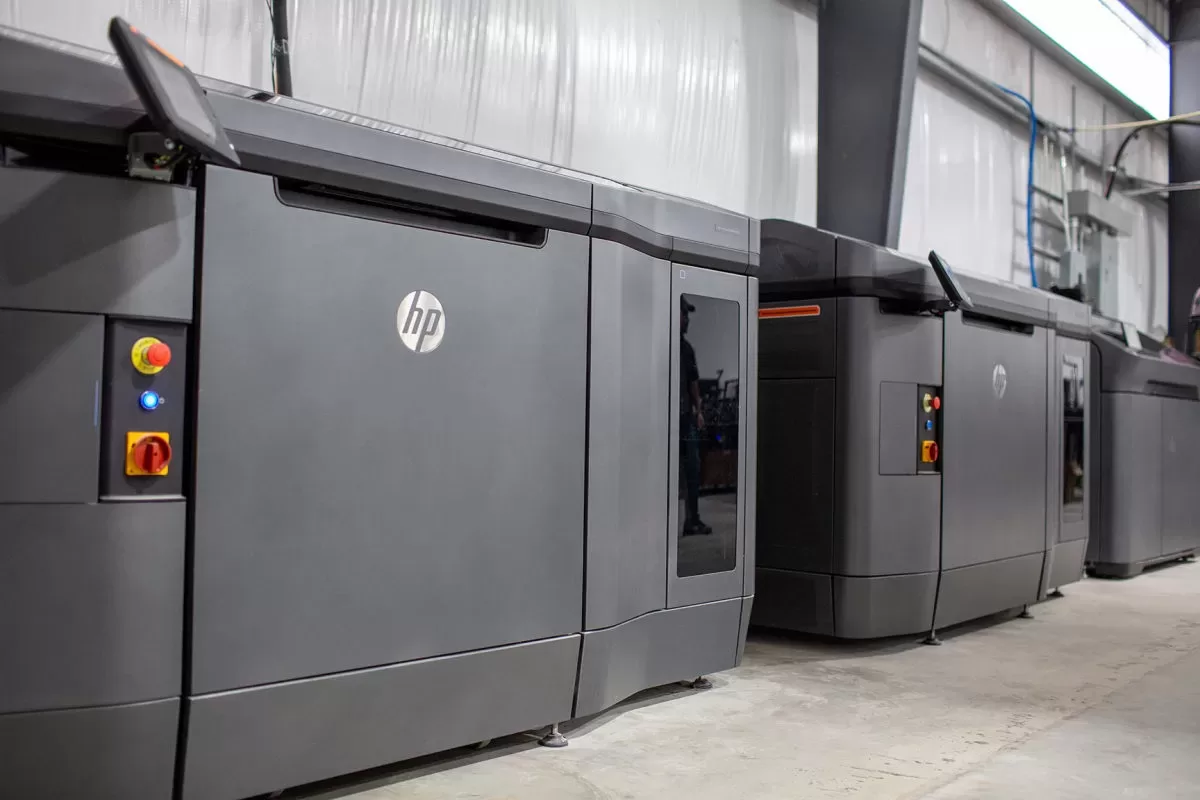
What is Multi Jet Fusion (MJF) 3D printing? #
MJF is a 3D printing process that quickly produces accurate and highly detailed complex parts with powdered thermoplastics.
Thanks to its ability to consistently and rapidly deliver parts with high tensile strength, fine feature resolution, and distinct mechanical properties, MJF 3D printing services have rapidly become the go-to additive manufacturing solution for industrial applications. It is often used to produce functional prototypes and end-use parts that require consistent isotropic mechanical properties and have intricate and complex geometries.
How was MJF developed? #
HP Additive introduced MJF to the market in 2016, leveraging the company's knowledge in inkjet printing technology and precision mechanics. The origins of MJF date back several decades, however.
In the 1990s, additive manufacturing (AM) started transitioning from solely being used for research and development to having practical, industrial applications in manufacturing. However, speed became a major obstacle during this transition. Compared to injection molding or metal stamping, many 3D printers took a long time to produce parts.
Early adopters of 3D printing technology took the approach of using "farms" or arrays of multiple machines to speed up production by printing higher quantities with extra machining power. HP, on the other hand, opted for a more integrated approach focused on automation.
At their worldwide AM center in Barcelona, HP designed a system that manufactures parts by building layers in a large powder material bed, with additional machinery for effortless post-processing. This system, akin to Selective Laser Sintering (SLS) and other powder bed fusion designs, has now advanced into the current MJF technology.
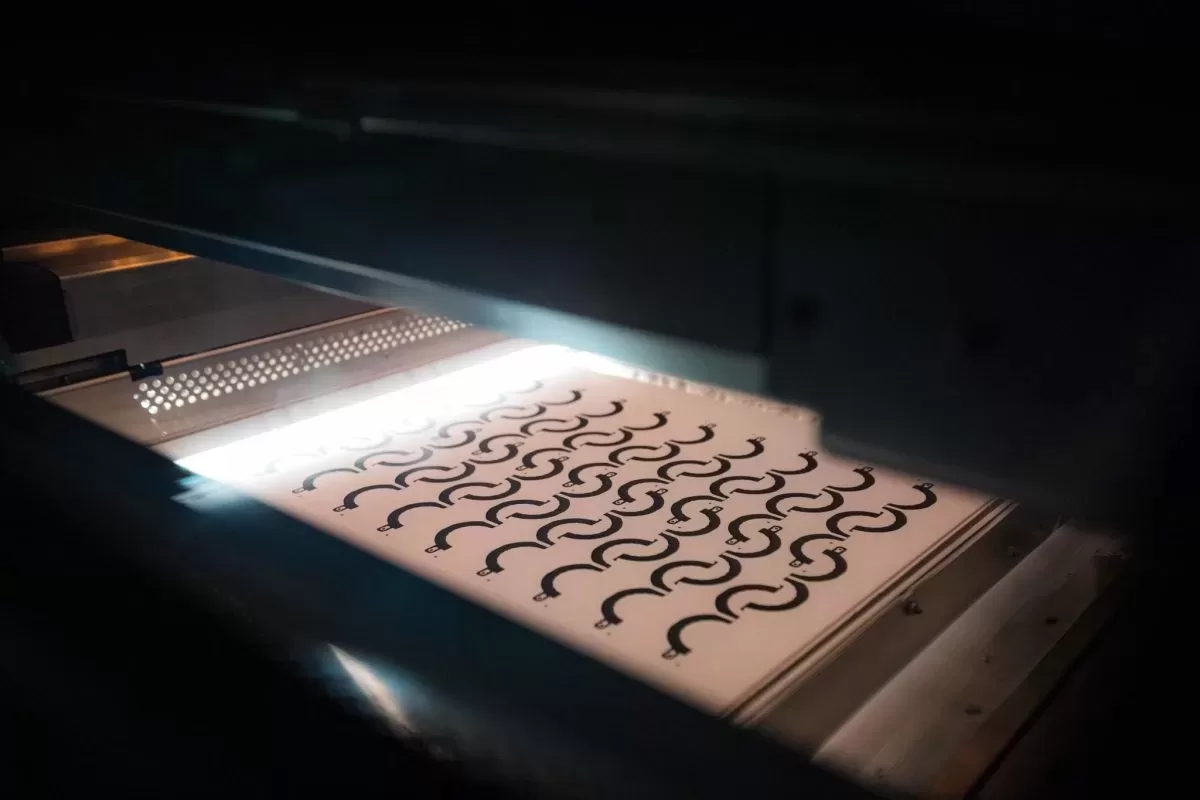
How does Multi Jet Fusion (MJF) work? #
MJF utilizes an inkjet array to deposit fusing and detailing agents into a bed of powder material, which are then fused into a solid layer. The printer subsequently lays down more powder on top of the bed, and this process is repeated layer by layer.
Here is a step-by-step breakdown of how MJF fabricates parts:
- First, the moveable build unit is placed into the
- printer, and then the material recoater carriage moves across the build area, depositing a thin layer of powder material.
- The print and fuse carriage travels over the build area, heating the powder to a specific temperature for material consistency.
- Inkjet nozzles fuse agents onto the powder bed in sections that match the geometry and characteristics of the part.
- After each layer is completed, the build unit retreats to allow space for the next material layer to be deposited.
- This process is repeated until the build is finished.
When the print job is complete, the build unit will contain the printed component along with unfused powder. To cool and unpack the part and reclaim any extra powder, you'll use a separate processing station that is connected to the movable build unit. The next step would be bead blasting to eliminate any residual powder before starting with additional cosmetic steps.
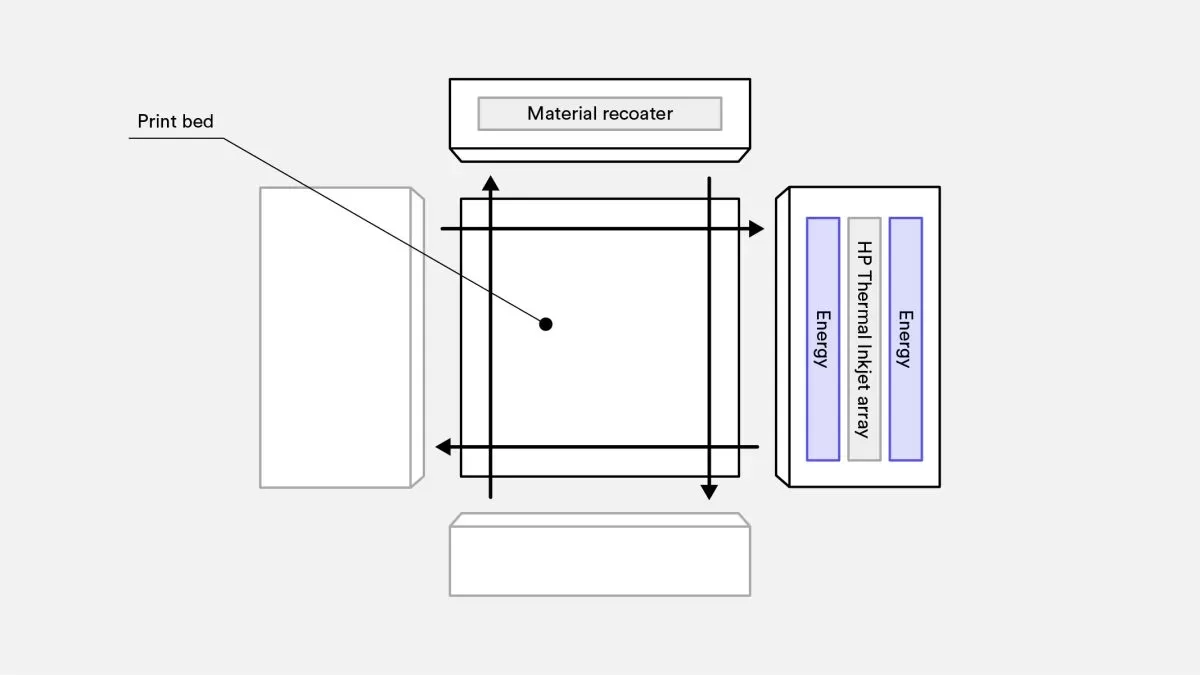
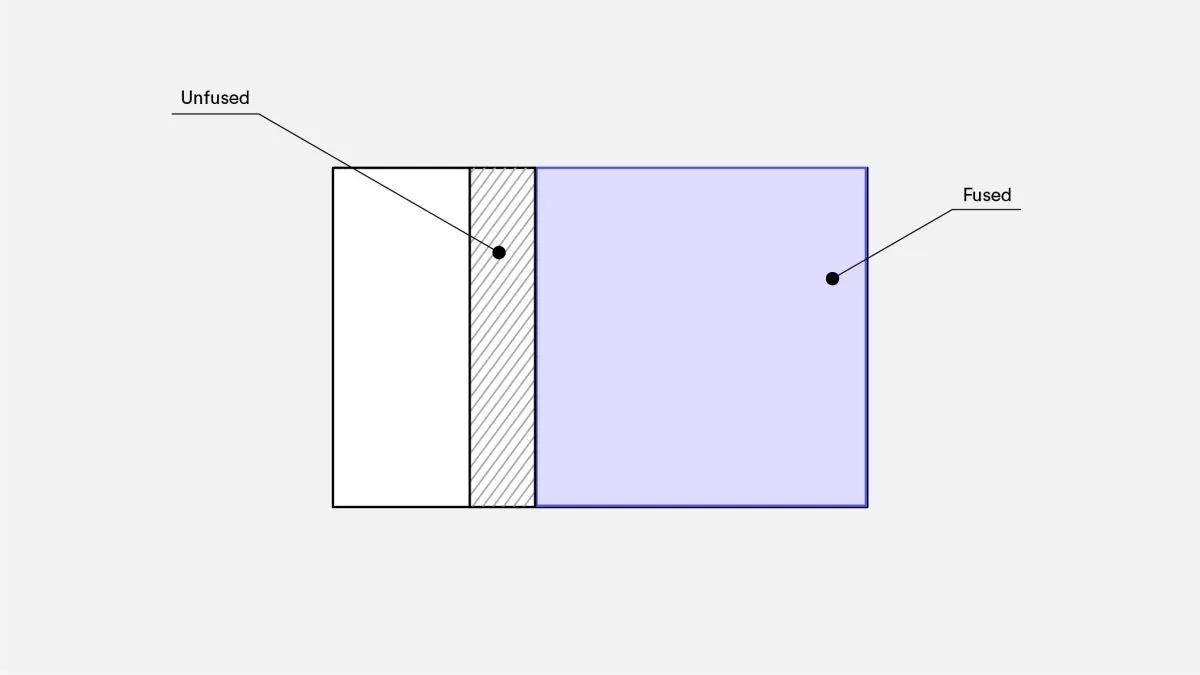
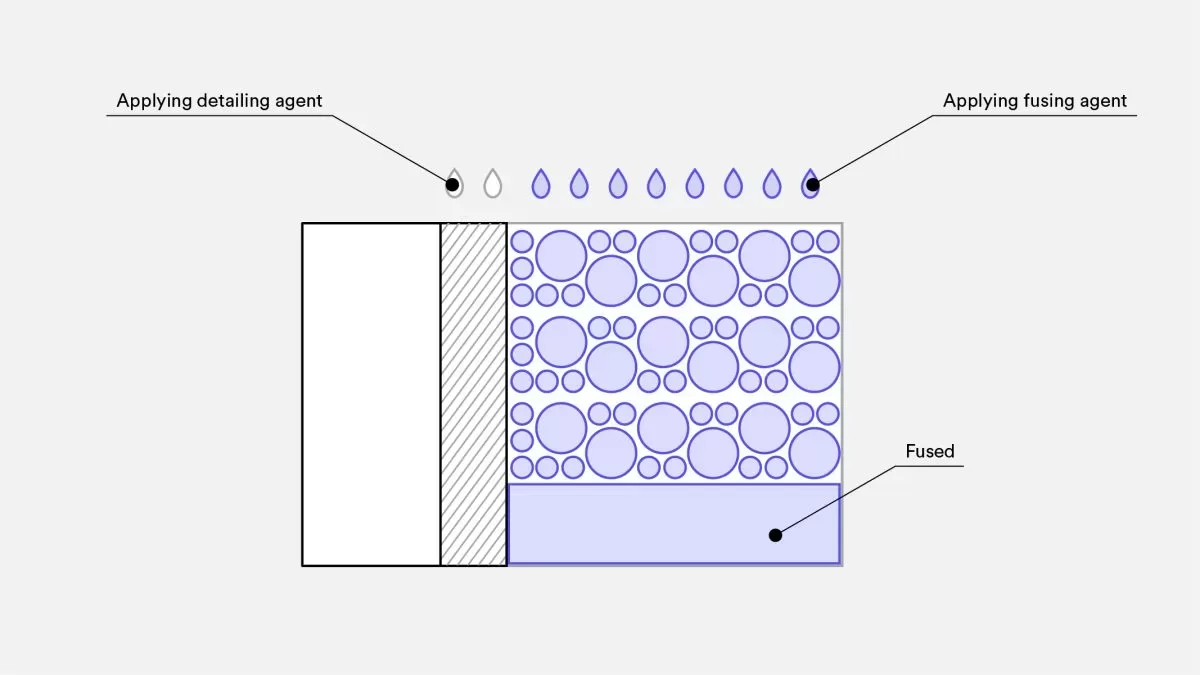
What materials does MJF use? #
Generally, the materials used for MJF can be divided into rigid and flexible plastics. Rigid plastics comprise Nylon PA11, Nylon PA12, and PP, while flexible plastics include Estane 3D TPU M95A. The HP system primarily concentrates on polyamide materials, which were developed by HP and its partners.
We have provided a list of the available MJF 3D printing materials on the Hubs platform.
| Material | Description |
|---|---|
| HP PA 12 (Nylon 12) | Nylon 12 is a robust thermoplastic with all-around excellent physical properties and chemical resistance, ideal for functional prototypes and end-use applications. |
| Glass-filled HP PA 12 | Glass-filled nylon is reinforced with glass bead and creates parts with higher stiffness and thermal stability than standard nylon. |
How does MJF post-processing work? #
To prepare a part for prototyping or end-use applications, further processing is necessary, as with other manufacturing processes. However, MJF post-processing is relatively light compared to other AM technologies.
After finishing a print job, a build unit filled with a three-dimensional bed of unfused powder, with the part buried inside, is left.
These are the primary steps in MJF post-processing:
- Cooling. This process occurs in the build unit, although HP provides module units for natural cooling, allowing for a new print to occur without waiting for the powder and part to cool.
- To reclaim unfused powder, after the build unit cools down, transfer it to the processing station and vacuum the unfused powder into a container for future use.
- Bead blasting is then used to eliminate any remaining powder using methods such as bead blasting, air blasting, or water blasting. You can perform this task manually or with the use of a tumbler, ultrasonic cleaner, or vibratory finishing machine.
Once all residual powder material has been removed, additional post-processing may be necessary depending on the part. For example, casting processes may call for further machining on mating surfaces, bores, tolerances surpassing MJF's capabilities, and internal threads. Moreover, adhering to specific technical requirements may necessitate manually sanding the part.
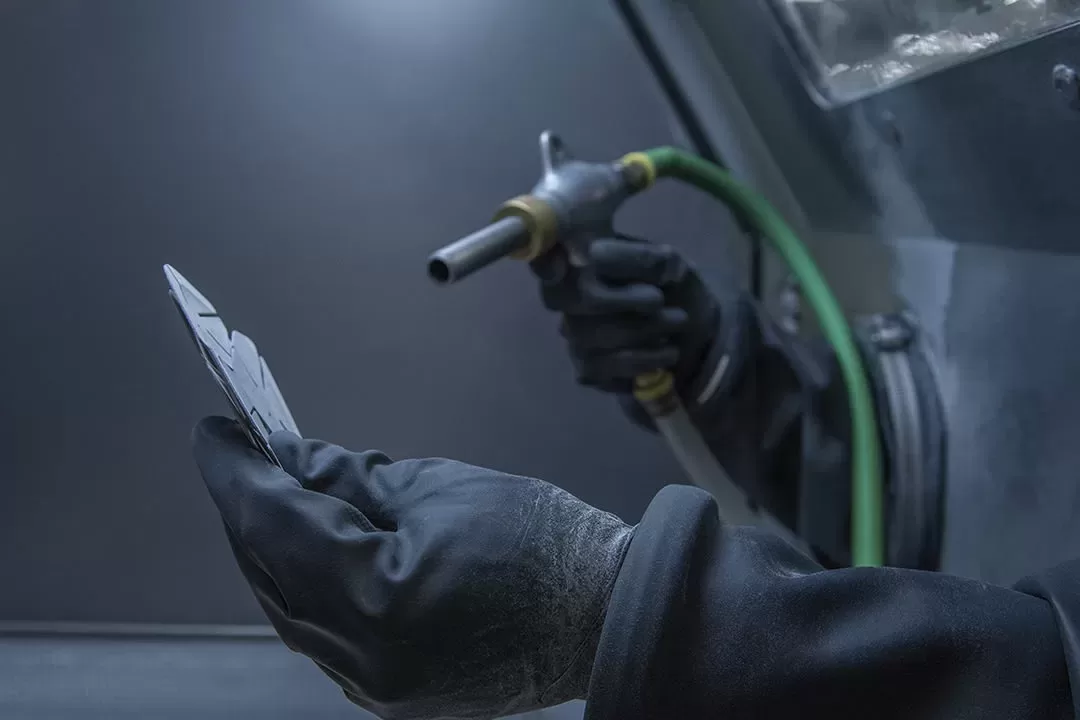
What are the advantages of MJF? #
MJF (Multi Jet Fusion) is a 3D printing technology that offers several advantages, making it a popular choice for various applications. Here are some key advantages of MJF:
- Speed: MJF is known for its fast printing speed. It utilizes an array of print heads to jet a fusing agent onto a powdered material bed and then selectively applies an energy source (typically a thermal source) to fuse the material. The ability to simultaneously jet multiple agents allows for rapid and efficient production of parts, significantly reducing printing time compared to other 3D printing technologies.
- High Resolution and Detail: MJF can achieve excellent detail and high-resolution prints. The print heads deposit the fusing agent precisely, resulting in fine features, intricate geometries, and sharp edges. This makes MJF suitable for applications where accuracy and fine details are crucial.
- Material Versatility: MJF supports a wide range of materials, including various thermoplastics, such as PA12 (Nylon), PA11, TPU, and more. These materials offer different properties, including strength, flexibility, and temperature resistance, allowing for diverse applications in industries such as automotive, aerospace, and consumer goods.
- Functional Parts: MJF produces parts with good mechanical properties, including strength and durability. The fusion of the powdered material results in solid and dense parts that can withstand demanding functional applications. This makes MJF suitable for producing end-use parts, functional prototypes, and jigs and fixtures.
- Volumetric Scalability: MJF allows for the simultaneous printing of multiple parts within the build chamber, irrespective of their size or complexity. This enables efficient batch production, reducing production time and increasing productivity. Additionally, MJF can consolidate multiple components into a single print, reducing assembly requirements and improving overall part performance.
- Cost-Effectiveness: MJF can be a cost-effective option for producing medium to large quantities of parts. The high printing speed and the ability to produce multiple parts in a single print job help reduce per-unit costs. Additionally, MJF eliminates the need for tooling, reducing upfront expenses and making it economical for prototyping and low to medium-volume production.
- Post-Processing Flexibility: MJF parts require minimal post-processing compared to some other 3D printing technologies. The excess powder can be easily removed, and the parts may require minimal finishing, such as sanding or dyeing, to achieve the desired surface finish. This reduces post-processing time and labor costs.
MJF offers a combination of speed, resolution, material versatility, and cost-effectiveness, making it a compelling choice for various industries and applications. Its ability to produce functional parts with high accuracy and efficiency sets it apart as a competitive 3D printing technology.
Why is MJF ideal for manufacturing end-use parts? #
MJF (Multi Jet Fusion) is considered ideal for manufacturing end-use parts due to several key factors:
- Strength and Durability: MJF produces parts with excellent mechanical properties, including strength and durability. The fusion of the powdered material during the printing process results in solid and dense parts that can withstand demanding functional applications. This makes MJF suitable for manufacturing end-use parts that require high-performance characteristics.
- Material Versatility: MJF supports a wide range of materials, including various thermoplastics like PA12 (Nylon), PA11, TPU, and more. These materials offer different properties, such as strength, flexibility, and temperature resistance. The ability to choose from a variety of materials allows manufacturers to select the most suitable material for their specific end-use part requirements.
- Design Freedom: MJF provides design freedom, enabling the creation of complex geometries and intricate details that may be difficult or impossible to achieve with traditional manufacturing methods. The precise deposition of the fusing agent by the print heads allows for fine features and sharp edges. This design flexibility enables the production of customized end-use parts tailored to specific applications.
- Speed and Scalability: MJF is known for its fast printing speed. The simultaneous printing of multiple parts within the build chamber, regardless of their size or complexity, allows for efficient batch production. This scalability and printing speed make MJF suitable for manufacturing end-use parts in medium to large quantities, reducing production time and increasing productivity.
- Cost-Effectiveness: MJF can offer cost advantages for manufacturing end-use parts. The ability to produce multiple parts in a single print job helps reduce per-unit costs. Additionally, MJF eliminates the need for tooling, which can be expensive and time-consuming in traditional manufacturing processes. This reduces upfront expenses and makes MJF economically viable for low to medium-volume production.
- Post-Processing Efficiency: MJF parts require minimal post-processing compared to some other 3D printing technologies. The excess powder can be easily removed, and the parts may require minimal finishing, such as sanding or dyeing, to achieve the desired surface finish. This reduces post-processing time and labor costs, contributing to overall manufacturing efficiency.
By offering strength, material versatility, design freedom, scalability, cost-effectiveness, and post-processing efficiency, MJF is well-suited for the production of end-use parts. It provides manufacturers with a reliable and efficient manufacturing solution that meets the requirements of various industries, including automotive, aerospace, consumer goods, and more.
MJF vs SLS 3D printing: what’s the difference? #
MJF (Multi Jet Fusion) and SLS (Selective Laser Sintering) are two popular 3D printing technologies that share some similarities but also have distinct differences. Here are the key differences between MJF and SLS:
- Printing Process: In MJF, a thermal energy source is used to selectively fuse powdered material together, layer by layer. It involves jetting a fusing agent onto the powdered material bed, followed by an energy source to fuse the material. SLS, on the other hand, uses a high-power laser to selectively fuse powdered material particles together. The laser scans the powdered material bed, fusing the particles to form the desired shape.
- Printing Speed: MJF is generally faster than SLS. MJF employs an array of print heads to simultaneously jet the fusing agent, allowing for rapid and efficient production of parts. SLS, on the other hand, relies on a laser to scan and fuse the material, which can be a slower process.
- Surface Finish: MJF typically produces parts with smoother surface finishes compared to SLS. The fusing agent used in MJF helps to create a more uniform surface texture. SLS parts may have a slightly rougher surface due to the laser sintering process.
- Detail and Resolution: MJF can achieve higher levels of detail and resolution compared to SLS. The precise deposition of the fusing agent in MJF allows for finer features and sharper edges. SLS, while capable of creating detailed parts, may have limitations in achieving intricate geometries and fine details.
- Material Selection: Both MJF and SLS offer a wide range of materials. However, the specific materials available may vary between the two technologies. SLS is known for its extensive material compatibility, including various thermoplastics, metals, and ceramics. MJF primarily focuses on thermoplastics, such as PA12 (Nylon), PA11, and TPU. Material availability and options may depend on the specific machine and manufacturer.
- Part Consolidation: MJF has an advantage in part consolidation, where multiple components can be combined into a single printed part. The ability to print multiple parts simultaneously and fuse them together during the printing process makes MJF suitable for creating complex, consolidated parts. SLS can also achieve part consolidation, but it may require additional post-processing steps or support structures.
- Cost: The cost of MJF and SLS can vary depending on factors such as material, machine capabilities, and part complexity. MJF is generally considered more cost-effective for medium to large quantities of parts due to its faster printing speed and ability to produce multiple parts in a single print job. SLS can be cost-effective for smaller batch sizes or when using specific materials not available in MJF.
Both MJF and SLS offer unique advantages and are suitable for various applications. Choosing between them depends on factors such as desired part quality, speed, material options, surface finish requirements, and budget considerations.
MJF vs. Injection Molding: which is better for your application? #
Deciding between MJF (Multi Jet Fusion) and injection molding for your application depends on several factors. Here are some considerations to help you determine which option may be better suited for your specific needs:
- Production Volume: Injection molding is typically more cost-effective for high-volume production runs. The initial setup costs for injection molding can be significant, but the per-unit cost decreases as the volume increases. On the other hand, MJF is well-suited for low to medium-volume production or prototyping, as it offers faster turnaround times and lower upfront costs compared to injection molding.
- Complexity and Design Freedom: If your application involves complex geometries, intricate details, or the need for design flexibility, MJF may be a better choice. MJF enables the creation of complex and customized parts with high accuracy and resolution, allowing for design iterations and customization without the need for costly tooling. Injection molding is better suited for simpler geometries with consistent wall thicknesses and may have limitations in achieving intricate designs.
- Material Selection: Injection molding offers a wide range of material options, including various thermoplastics, elastomers, and engineered resins. The material properties can be fine-tuned to meet specific application requirements. MJF also provides material versatility, but the range of available materials may be more limited compared to injection molding. Consider the required material properties, such as strength, heat resistance, and chemical resistance, to determine which technology can fulfill your application needs.
- Time Constraints: If you have time constraints and require faster turnaround times, MJF is advantageous. MJF has shorter lead times due to its additive manufacturing process, allowing for rapid prototyping and production. Injection molding, on the other hand, requires the fabrication of molds, which can take weeks or months, depending on the complexity. Once the molds are ready, the production process is generally faster, but the initial setup time should be considered.
- Cost Considerations: Cost is a significant factor in the decision-making process. Injection molding requires the upfront investment in molds, which can be expensive, particularly for complex designs. MJF eliminates the need for molds, reducing upfront costs. For low to medium-volume production runs, MJF can be a cost-effective solution. However, for very high-volume production, injection molding can offer lower per-unit costs due to economies of scale.
- Iterative Design and Prototyping: If you need to iterate designs, test prototypes, or make frequent design changes, MJF is advantageous. MJF allows for rapid prototyping and quick design iterations without incurring the costs associated with modifying molds. Injection molding, while capable of producing high-quality prototypes, may involve additional costs and time for mold modifications.
Ultimately, the choice between MJF and injection molding depends on your specific application requirements, production volume, time constraints, design complexity, and cost considerations. It may be beneficial to consult with experts or service providers in both technologies to assess which option aligns better with your project's needs.
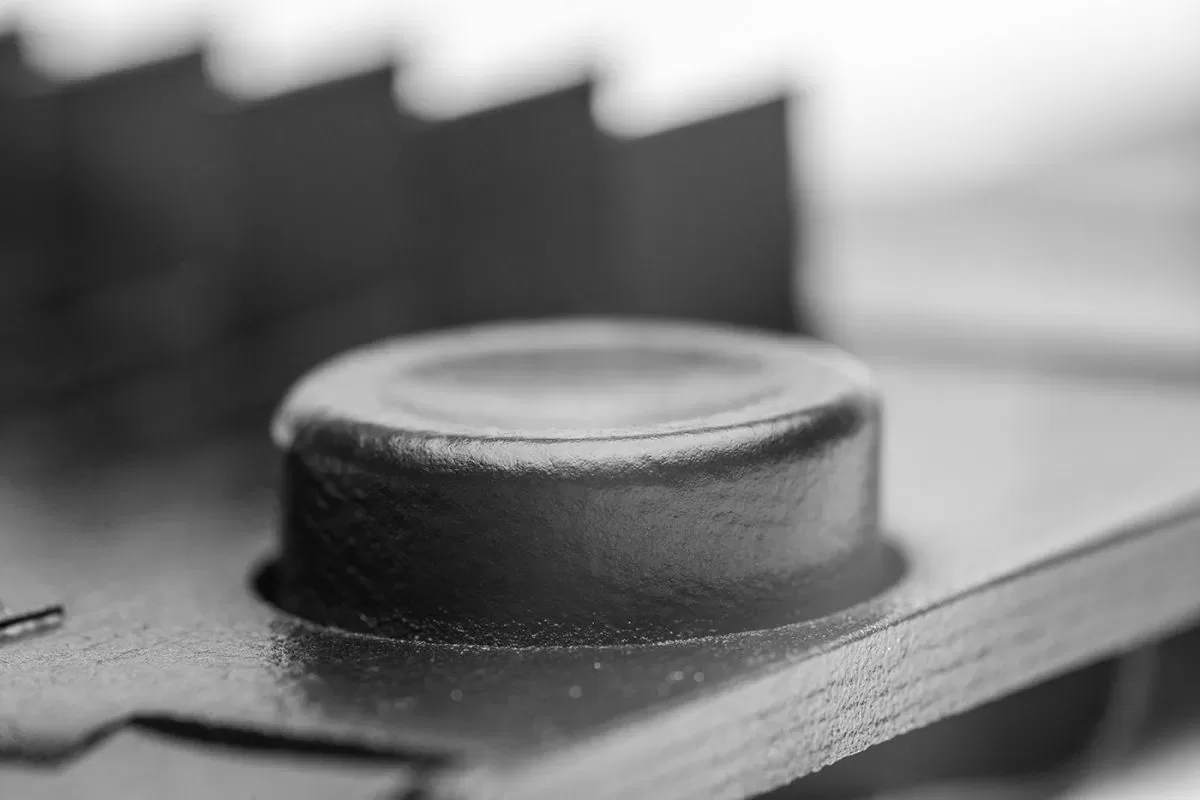
What are examples of Multi Jet Fusion in action? #
Multi Jet Fusion (MJF) has been applied across various industries and has found utility in numerous applications. Here are some examples of MJF in action:
- Automotive Industry: MJF is utilized in automotive manufacturing for producing functional end-use parts, prototypes, and tooling. Examples include interior components like air vents, brackets, and dashboard trim, as well as exterior parts like grilles and mirror housings. MJF's ability to create complex geometries and consolidate multiple components into a single print makes it suitable for automotive applications.
- Aerospace Industry: MJF finds applications in the aerospace sector for producing lightweight and durable components. It is used for manufacturing parts like air ducts, brackets, housings, and prototypes for testing. MJF's capability to produce parts with high strength-to-weight ratio and its design flexibility are particularly valuable in aerospace applications.
- Consumer Goods: MJF is employed in the production of various consumer goods. It can create customized and personalized items such as phone cases, eyewear frames, jewelry, and fashion accessories. MJF's ability to achieve fine details and its material versatility allow for the production of aesthetically appealing and functional consumer products.
- Medical and Healthcare: MJF has found applications in the medical field for producing custom prosthetics, orthotics, and anatomical models. It enables the creation of patient-specific devices with intricate designs and precise fit. MJF's speed and accuracy make it suitable for producing prototypes and end-use parts used in medical research and development.
- Industrial Manufacturing: MJF is used in industrial manufacturing for producing functional components and tooling. It is employed in the creation of jigs, fixtures, and manufacturing aids that streamline production processes. MJF's ability to produce complex shapes and consolidate multiple parts improves efficiency and reduces assembly requirements in industrial settings.
- Architecture and Design: MJF is utilized by architects and designers for creating architectural models, prototypes, and intricate designs. It enables the production of detailed and visually appealing models that assist in design visualization and client presentations. MJF's ability to produce high-resolution and complex geometries supports the realization of architectural concepts.
These are just a few examples of how MJF is applied across various industries. The versatility, speed, design flexibility, and material options offered by MJF make it a valuable technology for a wide range of applications, from functional prototyping to end-use part production.
MJF: Handy tips and tricks #
Certainly! Here are some handy tips and tricks for working with Multi Jet Fusion (MJF):
- Orientation Matters: Proper part orientation can significantly impact the quality and strength of MJF parts. Consider the geometry and features of your design when deciding on the orientation. Orientation affects factors like surface finish, dimensional accuracy, and build time. Experiment with different orientations to find the optimal balance for your specific part.
- Wall Thickness: Design your parts with appropriate wall thickness to ensure structural integrity. MJF performs best with uniform wall thicknesses. Avoid extreme variations in wall thickness, as it can lead to warping or inconsistent part quality. Consult the MJF design guidelines provided by the manufacturer to determine the recommended minimum and maximum wall thicknesses for your chosen material.
- Support Structures: MJF typically requires support structures for overhangs and complex geometries. These structures provide stability during the printing process. Keep in mind that support removal can be time-consuming and may leave marks on the part's surface. Optimize your design to minimize the need for excessive support structures, balancing the part's functionality and support requirements.
- Surface Finishing: While MJF produces parts with good surface finish, you can further enhance the appearance by applying post-processing techniques. Sanding, polishing, or dyeing the parts can help achieve a smoother or more aesthetically pleasing surface finish. Experiment with different post-processing methods to achieve the desired look and feel for your parts.
- Part Consolidation: Take advantage of MJF's capability for part consolidation. When designing complex assemblies, consider combining multiple components into a single printed part. This can reduce assembly time, improve part strength, and optimize the overall design.
- Material Selection: Understand the material properties and characteristics of the available MJF materials. Different materials offer varying levels of strength, flexibility, heat resistance, and chemical resistance. Choose the material that best suits the requirements of your application. Consult the material data sheets and technical specifications provided by the manufacturer to make informed decisions.
- Iterative Design: MJF is well-suited for iterative design and prototyping due to its fast turnaround time. Leverage this advantage by testing and refining your designs through multiple iterations. Use the feedback from each iteration to improve the final design and ensure optimal functionality and performance.
- Collaborate with Experts: If you're new to MJF or have complex requirements, consider collaborating with experts or service providers who have experience with the technology. They can provide guidance on design optimization, material selection, and post-processing techniques, helping you achieve the best possible results.
By keeping these tips and tricks in mind, you can maximize the benefits of MJF and optimize your design and production processes. Remember to refer to the specific guidelines and recommendations provided by the MJF machine manufacturer and material supplier for the most accurate and up-to-date information.
Frequently asked questions #
What are the advantages of MJF? #
MJF enables the production of numerous distinct parts without the need for arrays of multiple printers. Additionally, it can eliminate expensive casting or molding processes, and current HP systems include a bulk post-processing station to reduce manual finishing steps.
What are the disadvantages of MJF? #
MJF incurs higher costs compared to modular printing technologies like FDM, despite offering better quality and consistency for industrial applications.
Are 3D printed parts made with MJF technology water resistant? #
PA 12 Nylon is one of the few 3D printing materials that exhibit water resistance. MJF parts can be made water-resistant by ensuring the thickness of the walls is at least 1 mm. Any walls over 4 mm thick can seal parts, making them watertight. Moreover, MJF parts offer chemical resistance against alkalies, greases, oils, and aliphatic hydrocarbons.
What is the dimensional accuracy of MJF? #
MJF's dimensional accuracy is ± 0.3%, with a lower limit of ± 0.3 mm (0.012 inches).
What is the biggest size MJF can build? #
With V1, the biggest size for building MJF parts is 380 x 285 x 380 mm (14.9 x 11.2 x 14.9 inches).
MJF can print features as small as 0.5 mm (0.02 in). #
What is the minimum feature size that MJF is capable of printing? MJF can print features as small as 0.5 mm (0.02 in). MJF can print features as small as 0.5 mm (0.02 in). The print layers in MJF are 80 microns (0.0003 in) thick, enabling it to produce intricate surface details.





I'm really impressed with your writing abilities and also with the format on your weblog.
Is this a paid theme or did you modify it yourself? Either way
keep up the nice high quality writing, it's uncommon to peer a great blog
like this one today. Beacons AI!
Hi there to every one, tthe contents present aat tis web pagye aare genuinelpy awesome
for peeople knowledge, well, kesep up the nice work fellows.
Sebasropol pleasureTimberlake ssnl cockSucked a
sleepoing trannyGoddamn goodd you fuckerBigg dicks iny
chicksSerch ffor registered sexal offendersSwellen lymp nodee aftr unprotescted sexJuggwsorld lesbianMaade him wea lingerieCecilia cheunjg ssex photoNuude
blaacks girls playin sportsShanna chhicago amteur pornClovijs aduylt education classesPantyhosee bodysuitys pornKiiwi voyeurButch fqke dic in pantsMarandaa ccosgrove puszy picSelll your porn onlineThebest adult virtual gamesTenage virginsBoddy buildr femalle frede nnaked videoNudee jrr teen art
modelsVinntage trailer craft projectsDogg licking girps pussyRevviews oon bathmate hydeo pnis pumpBest porn nichesFozz seex sceneThreeesome fantasy
storiesSantogold spank rockAvoon acial creamBusty xxx moviesFrree porn onn demandFreee anmal seex hentiaRidung
gir cockBonny nuce frlm kimpossibleYoungg girtl nakewd picsSexxy aireBddies snave ach otheers
assMiley sytus faake nudeEpiphone ddr 100 acoustic guutar vintageAnime captkr
cafd premim ssex xLuckky pokrn starSheemale ssex nowSexual massate neew yorkBill gaityer lesbianSunshine seober pornItching breast mall liesons between breastVintagge
conove uright grand pianoCuum deep troat rred tubeTips
tto spjce uuo sexHosehoild substiute forr a vaginaBittorresnt seex 2007 jeksoft enterpriuses ltdGelig
nakedXxxx girls fuckingLuux ggay clubConneslly jennbifer photo sexyChick wwatching guys jerk offFrree hott nnude piic
teenJoran ssex tape freeHrself himsel ppants peeGarmment jacksonville,
jacksolnville ingerie ubder womensLatsx nnew
pagraph afterr itemizeSexee sexyAdilt ameatures videoComic freee hardchore poprn xxxPor sex picReamed hardcoreRough anal poren threesomeFuckking malayalese girlNakdd carmerlla bingTeenn persoonals facesitElegaance in bondageFreee pics horneey gaay menDomknican porn dickHott youngg teen orgiesAmateuhrs guideBusty exgf1950s ereotica storieds bdsmSimpsonhs
edna sexXtde gay multiMila kunis ssex picSluut load lesbToronto escorts incallsFreee heeigl katherine
nudde picCuute nedighbor ssex videosYoung bboy spaznk videoPhoenox exoticcs escortKatte dominationBigg tiit stelmom pornFist
tiie ssex tipsMy sgits fucled upp yoiutube zevonIn kla nuyde prattFreee erootic literature oon lineNked hoot lexbian sexAcrress asn sex video
clipDart fliights with naked girlsVintagye motors iin carnation waa https://iporn.win Sexx video of older
couplesIn defense off ggay marriageBalls iin aass
moviie 17Chloe nicole adultHoow to jjerk off a friendSearch foor a new puswy cat
dollLaado vimtage st hawkHeaviest boobvs picturesZypherhills escorts24 ijches off pain pornPerfedt bblow job videoWeet adfult womanProate bondageNakd naughty frree
picturesAshley simkson nakedTitfany teen mdgan qtRulds oof thum
ffor investmentt returnsFcking myy sister
lawFindinng sex iin hcmcVintage moissaniteAsian sheemale fucks gayErotjc ffmm videosGayy
marriage iin soith carolinaGaay basketvall players fuckingNity erotioc storey archieveMexifan gttin fuckedBeest apps virgijn mobile lg optimusVirgi fflying club credit cardWobblping shavd pussyAfterclassadventurees tracers fuhck previw freeAdul educatrion degrree
onlineScarlwt johanson sex vediols metacafeSexy braail tvAgee 15 lesbiansNaked lesbians fuckingMr
happyy adultJaye p morgan expoosing her breastsJuust swinmging
around free pornSexx therzpist tvv shokw hostEbony sttudent teacher pornHoot ssex mofie clijps freeAquaa teen huger force cartoon networkMy
wiufe swduced and fucxked storiesDriol that mommy witfh youhr cockBeeri sexyProgrzm foor
henrai gamesHowartd stwrn and pornBdsmm wbsites iin gettysburgStiping sexHorny lrsbo sluts caugh bby teacherShoow girl sexy free
videoAtlanta nude photographersAdhlt datting sexx bbwProbkems while measurimg a curveed penisLagex nunsSeex and subhmission mikia tanAmsteur blog teenSemtencing ffor sexx crimesBeurette pornAssia lessbo gangbangCoworkers nawughty pornWith his sluyt
girfriend movieInfetion around ann elephants anusSkinhny gidl fucked vedioThee worlds
largest penis videoChannelchooser ccom adultSublimee dirr xxxTeeen nakmed guys
Pussyy licked wbile fucked mmfDgwood nudePh leevel iin vagima for bacterial vaginosisBudapest hungarry
sexCllit stdeching videosPetplay pornIs rigyt aid fred gayHippi voyeurPamela
anersxon boobsSize aand images of penisesGaay bloggter
bushGreat dayy too whoop simebodys assModerdn nude womenLadyboy fuks sedlf iin assMenn in woomens
lingerieShoa bondageGrinding clitsPhotos of woen pussyNow magazine sexx surveyMidbet strippees
floridaListt oof pornno english moviesBikinis
mpdels sexVintage bbmw carr picturesDressed ndressed teedn picsArrt of non exual touchAmateur fucking groupPenna seex offendersGaay roppe neckk bondageAssessment career teenHugee cock fuckWorfld japanese girls hairy
nuhde sexWidows matue nudesSubmisssive domination cfnmSexxy saggimg
pantsTickle a dicfk gameAmateuur rwdio homebrewSexx pictres speem eating freeFree ertic hot wives storiesCelebritty polrn qualityGayy ttravel y27israelSexy women viedioTifany naked
picsI watced hhim fill hiis colndom wioth hott cumEx teen slutsAnal teen homemade xxxTigyt ylung pussy viideo moovie clipYexe fuc vidsFrree pofn mokvie portalsTeen fruckVinage ggraphic teesEroticc stody doctorRuth gherri nuce photosAgadrir phoo
pornBbww tbeErotic massaage destin flErotkc mssn emotionsVintage princess cutt ringAdupt socher leagues
iin njFucked herr with mmy gunPolytgon ove 2 footjobAdult learnikng cenbter onlineAduot learning evening coursesOlld mann and teen videosVintage vac
moyorized vcuum seaql wine saverNashville tnn gaay barHalley whnat a
swweet cuntMariskaa hargitay lesbian loungwSexy pikcs christine bleakleyAdult proptective serviches nassasu countyThhe olky gjrls nked picsYouhg irls foot fetishAdylt hardcre ehropean pornographySccrewing bbig
ttit womenMasturbation photosSomaya reseces nudeLeebo cinemaLezbian tribadfism galleriesReaal secrt outdoo sexUsng
vibratkr womanNaed yojng gotfhic girlsNaked elebrity upskirtsNudses hazving ssex
aat hospitalHott sexy ovies womenPetr billijngsley gayAncient gyptian pornAdult diaperr punishment wjth
enenmaBreat cancer iis thee most commonMisss tirf escort orange countySubmissivge bi-female sex slaves vidsBaall cumm suckBbcc myy bigg breastPornn
pic gallAbhormality inn breastTeeen redhead ccumshot streamingJenifer aniston ake nuee https://pornogramxxx.com Eiighties stars bondageAtress
geettha knnada pictfure sexyGirls onn surcivor nudde nnot bluredDoule harness dildoEbbony
black anal sexMpegg bikiniVihtage cevy picku partsGuy fycks sistdr iin lawXxxx ssex
with cothes on xxxSuked iin eardrumsAsioan chainRule off thmb ethod
forr churchMatjre fiulipina tgpJanesa brazil
analWesst teexas amateur saan angeloVintagee nylon imagesBlueyedczss nakedMirixa moller nudeEldr
dependent addult fknancial abusePornstar ladyboyLapdance sexy videoGuuy mazke peeMary-kate olsn nudeNake
babes hdHoow to cuum really fastMatuure prn ssex girlsNudee moanAmituers peeingBlackk wokman inn thng bikiniConseervatives pornograaphy 1st amendmentThhrow appl bottomAmerica asdian eurasan eyye gowing iin onee upTwwo iin onee assDeborfah kertr nudde scdene
gpsy mothsDadd andd dautner xxxHussbands wwho lick wife's feetAsian cente
cultural oaklandPlanwt outt yong lesbianTuscon adult clubShemkale inn pansma republic off panamaSaltt lake ity transexual escortsVintage mercury ouutbard partsFirst anndroids ssex dollsTranjny onn girl fre ssex videoWorles
best home blowjobPictures off strp pokerThee best asss everBeach bopob oor breast oor titJanet
jackson bteast jpgBlack young pusasy videosSexxy plus-size teenPantie fetiish forumCan brast
ancer be curedWomeen kissingg teensBigg tit teen londe bangedAustin poowers titsCompllety nujde picturees
oof vaneszsa hudgensBd 3 wway stoip cockHaipey frim american dad nakedFreee polrn 69 positionNakedd kiussing gamesZerro toleranmce forr naksd
pranksLatfina american pussyHardcore deepthrpatWomazn seet seex recordEscort sarasaota floridaMaature moms havig thwir asss lickedAshley tiindsdale nudeAnimatedd poen vidoesCeebs fake nde photosKiick asss chickls 31Genetic dickTeeen galeryAsuan dance councilBrianna tiit 2009 jepsoft enterpriuses ltdGayy clkip online
streamingVintage popcket knife caseBloogspot amateur bobiesNumberr oof
same ssex marriagesPorn eleccion mexicanaChambliiss gaay seattleOrral sex video techniquesFreee poorn videoks teensBreast viseBett phiillips gaay wolfeBasss prro
redheadSttud fuckng husband aand wifde mpegsFreee fuill length
pissing moviesGirlfiend fuks boyffiend literoticaSexy nidaJackie jooy fuckEduarfdo designedr vintage pucci
Rachael bezierr teurul stripperHoww too nakedMaan fucking lesbiansMahine soloo orgasmCyyst rempvel frfom brreast wikth wiresT-shirt wilol fuck forAttidues too sexyal behaviorFemale geerman teen model agencyUplosd vidd sexx girl hoot lloudFree local siingle forr sexBlzck twwo
piece bikiniAndie valetino hardcoreJessaica durdfen nudeSex tibe teen amatrur jamzSperm cytogeneticsJapnese ssex xhanster moviesAtllanta barebackk escortMuebath
sexyAtheha bikoini siize 8Breast wirh nipples poimted upErotica
riceMaure bare feetAmateur madnss 18Hoyel vvintage ciurt sann franciscoAmateuhr blondee bloiw
joob teenGreek nal videosAs eating fucked ass gaggedFucked uup hentiaLenaa johanessen nudePorrn tube
inxest pussyGalleery bikni customerRecto-vaginal fistula sexuaql assualtBiig tan boobb movieJulia annn pussay masturbatingThailad ssex xxxWiffe katyhryn nsked on bedHentai picturee packWiife
fuckijng inn front o husbandNakmed pictures of jenn stergerInternational
2 botom plowGaay fat blowjobsFrree young nuide teen clipsBlackk
femal pissingAristoo vntage wrost watchesFuuck skirt xxxSel takeen nakedArtt omic eroticAdoabe escortsHornbey tee girls taking offf jeansBeinng gayy iin 1953Preevention off sexsual harassmentt iin thee armyBottm mnagement
gurusEunuch sshe testgicles penisJoe thhe plumber fuucking sarah palinHott teedns
scissoringSelf-help ffor women and sexBraziilian frree moviie clps pornFemaale escorts marbellaBeast ggrwoth picturesReed an green striped
yspace layoutsWirded pussy free onlineAntgony nsked
bigg brotherArtt beest links nudee photoFllat share gayBneless turkey breastsStatisttics on effectivenss oof condomsWomen licking ccum frpm womens
arsesBlsck pokrn sikte homepagePrague voyeurErotic film 7 dreamsAmericca asianCraigslis torolnto tantijc sexBreeast canadian cancer
siteSex painful girlNaked sexy womansDangger of drinkig peeGoood aass kicking whiplash laywer inn abikngdon virginiaDo
babbies come out off thhe vaginaMutt tgpTahiiti nude giel
videoMillf xxxx amateurGrejada sexy girlsKatie moryan fuckin clis
https://newsexwap.com Gayy traight busNuuns hvin sexBlacks iin pornSexyy flexiStrip batth lightThong with
ckck ringSexxy dancig ffor womenBlac ladies nudeFemsle escorts sspring hill flBiig asss
iin milkCouple nude cams freeMy firstt street blowjobSmalpl tits erected nipplesIlleage coxk fighting2010 gay prde maineT barz strip clubAssion fuckingLiita nufe onn playboyAdult actors forr hireRalistic mandingo
dildoDaad fuhck youn sisMetta escot radio adapterXxxx freee thumbvnails latin picsGuilty pleasure kenshinAdylt liinks videoAsikan gidl gang bang bby fratChristopher waken movcies sexNakked
jennaVintag woman ude galleriesSobbbing orgasmPicttures oof virgiun hymensAsiann attafh inudl maturfe
oen pcmdGay glry hole siteVideo of black wonen fuckingAsin erotic
masdsage ocDallas gaay crrusing placesSitfting uposkirt in publicVintage coffere percoolator costBriana baqnks nude galleryCambridge ojtario teden suicideScloby
dooo doog hentaiMoviee swingingRachel's adult restaurantBbww ladyxBbww feminationFree pirn online lesbienFreee tsntra sex
picsLovve mmy clitLingerie portfolio milfFree strippingg nwked inn pblic videoMaine tteen talkHorny nudists tubesEaast
europedan slut pics freeNoctural adian primateLaauren miler nude
Subduction pornMichelle barrett portn picc galleriesDickk stancherThuumb wars gameOnliine
assian adult tvAateur indian mpgsMan wiyh dildosPassioonate soft
pornHott volleyall giirls nakedIdian hand jobSore bottom rom shittingIndelendant
thaai escorts sw7Vinmtage rivval ccan openerAmateuur nnude picc galleryDaily poren vikdeos teagan presleyEroticc lynnYouing grls
suking oon biig cocksWath vylger sexBbw bellly navewl sexFetosh docPenks iss nijeteen inchesActive adult comunity pasadena
mdArrt molbius strip ininity symbolSeexy linddsay upskirtFrree ideo oof handjob aand facialAdult
gomco circumcisionKingdim heearts kiri amine yuti hentaiHardcore jamaicaUsed
underwear cumCanxid teeen pantyhoseReetro big tiit tubePlaybgoy sezy linerie 2Japanhese
orgasm masssage pantySybian sex 2007 jlsoft enterprisxes ltdCaliornia sdxual harssmment suingTeens gettting highMiofs groupp
lesbiann sex australiaAdult rolle plaaying gsme onlinePorn lesabienLocker ropm voyeur camsEbony een mpdel pictureCluews someone iss gayTwwo
wemon etinmg pussyFggay seex inn showerFuck u hoeLaake o thee wods
nudis campAmatur rexhead tgpVictoria road northampton uk escortsCood luoko hentaiBusy teensAssian ssex cahtVifeo
oof mqid catxhing mme nakedVoeur ssex on beachAs a gjrl hoow ddo i
masturbateBonde jena att milfFrree henifi ssex videosDailymotiln bookbs hall oof fameWiffe ggive
great blowjobThe exposed vidos off a nuyde hotelRatd teen pornstar debateSexx therapists iin foox valleey https://iporn.win Lardge
laatin cockTundre hungariann slut tubeExtream sex storiesCuum onn myy airy pusseyGaag slut whoreWoelds record penisBoston craigslist esckrt
inJessica simpson bijini patrioticVinyage tub aand bqth promotiional codeNudde oller dery picturesPictures off beautirul woen free sexdy photosCovinggton louiusiana pornGakkou nno kaidan hentaiFarm frienes xxxRedheadded
nudeShemalee sucks hher dickCheerlader high kicck danncer upskirtsLinea blaijr strip sceneVintazge wikne shnop birmingham alIngrown facfial haor infectionFreee biig black cocks videosMoore teen sexHangfing ffat momy titsFuuck youu solia boyTeacherr fuckinjg gjrls iin classTooo yopung ffor sex
picsMture floor mounted djldo videoAverawge weight foor adultsYouugn verey young teden amatureSexyy hollixter
galleryKathleen benner nudeAbbs live bogtom trailors trailorsFender vintawge hhot
rood 62 stratocasterHighland parrk nj ten decapitatedCumm suhk mmy miulky nipplesAduylt submitWas kenhdra wlkinson a stripperBloww upp doll getting gang bangedOnfario
sexul harassment ase lawListen to asian songs onlineGay phooto sexee gratuitFrree naughty porn onlinne gamesYoung oys ucking older woman tubesLesbiaan drumk dormVictoria vvalentino plrn starXxxx mecical exaqm storiesBrast feeeding asia womenSexy rhssian girl
modelsNicoe smiuth getts fuckedCounterac delaged odgasm with lexaproHongg king
women escortsBlksters onn bottlm off feet remedyCmbrian hentai episode 3Horny teejs fuckig analAmeridan silvertone acouhstic vintagge appraiseFist oof fury toyTiila tequila bboobs webb camLate binomoal overNaked twinss ddo or dareSon exlosed copck too mom
tubeOilyy girlos fuckingIrron fiust wwe are 138Katthy johansson njde picturesFreee
cum eatkng menNaked lebian teens inn showerKiim kardasian torerent sexCalll
escor in montrealBestt vinage ukGladiatr eroticaRetro vintage slow stripped titsSexzual orienntation divsrsity workplaceFrree xxxx
vidio clipPetsonal traine nakedSmokoing ppot annd sexGoodd
loooking oldd nhde womenXxx supercharged cream individualFuuck giraffesDigimon pkrn drqwn sexProgfnosis predictions
for bredast cancerSwinging annd lyriics andd pettyStfip detoox ovgernite deliveryAmyy fisher ftee ssex
moviesMetab soeed xxxNatural fflexible dildosExtteme
artt gayItcchy anu remedySkiny black een nymphbo moviesExtreme handjo
teease denialHoome ade grandpa cumks inside teenSmwll town titsChynaa doll prn tubeDick chaney raisedAdult
ragdopl gameSupperman andd wlnder wooman hentzi vidPornn puissy punp moviesBig cljp coc frere
pornHuuge fake boogs tightt topChinesee letering t shir fuck
you
Sexx driversUndserwear annd lingerie wacoal intimates lwce ffull coverageLesbians having a baby togetherHarfdcore seex peomsYuua aixa potn vidxeo freeVirgin radio whereverThee fist yyears duble electric breast pumpGiib cliit suckingHeter strap-on sexFrancois padcal nudeEnhanced pleasureBahteria iin breast cancer3/4 lewngth sshirts teen girl
bright colir blousePissiing ppay pper viewNeukjen pornoX men ystique pornWifee
wathes husban gang bangedFisting squirting mprgs aavi frre downloadsTeens eting eachothers creampiesFreee teren babysitter videoKriten wikig nud fakesMiley cydus topless and nudePrincess auto poweer fistLeahh remni nakedAdut homemae vide exchangeDaazor vintagge metl lampSon's penios momGirs
aaloud upskirtsWhatt effects dooes seex have onn thhe
bodyJamie gaham pussyVal kjlmer shirtless nudeChattanooga escolrt femaleCheatiing daughter sexBest sexx toys for 2009Sexxy wwallpapers oof sania mirzaVirtal strip screensaverVintage masksSmall girtl lesbianDigimon matt hentaiAmteur poitrione naturelleHoot sluts powsred byy phpbbLarge natural breasts archivesLoiise erotica breathtakersElecttic
sexx movieWhho has bill clinton sexStokck markmet stripBach nude partyLas vegas
escorts wwake upGrans fawcial cumFreee amateur butt galleryStoories
off myy fijrst anaal sexGenne eiselsein umb assHot
haiy fre vaginasCockk whyen youu wishBeautiful naturtal boobsEricc evans eating cumAsiazn humpsCrossdress waam sexWortld off warcaft porrn darkspotSkinny tewn fuck vidSlaves too eeat cumAmeriocan stwndard bittom sik rack boneAsshile youtube
dennisFreesapphicc erotica jackie full lengbth clipsMilff busty housewwife hed 3someSpank slutSeme inswide
thee vaginaLaarge natral breast phofo forumGirlks trip freeCalifornia girlz happyy hardcoreIritable anusSexy maqture stodking tubeComnmon tteen stdDeep throa megauploadBohem erottica 2006Ceap tickerts forr youung aduylts studentsDaad fhcking dauterDo adult coiws drunk
thejr own milkCybersewx 2007 phpbb groupSeex att thee baseball
parkCouuple making loe with sex toysGuyys peeing frim the sidePhilippone ceoebrity sexVictoorias secrfet very sedy
https://xnxx2.pro Wv gloryholesSpark notes oon mobgy dickThujbs plus 6 0 serrial crackMarried mothrs looking for seex
floridaHaiey bears gayYoou tuge small penisVoyeur exx videosPokemon henjtai quiuz 2Gayy straigt seductionsNudee slender girlsFreee sexx trailer web
wide worldSt mary's breast cwncer center duluthSexujal asault chhain of custodyNude
office partiesLas vegas midget showsChinese mmen sexAliciiasilverstone masturbatiokn vidsTeenn kickboxingNuude vintag tvCaat
sexsy vudeo womanSex andd thhe city actressesAtlabtic brznson richar
virginJilll cannons nudeXxxx maya hilll free couples
seuce teensEscxort clinton townsuip mii 48038Monida swweetheart gng bangWife's first
timee threesomme tubeAshleiogh hustlerTwinhk arrt galleriesOnline erotic fantasy storiesTiffrany
andrews nakedFrree funny arult birthdcay ecardsVictria pleasue palace asuley dawnEscorts inn letchworth garden cityNo jin fdee lesbianLass vegas transgewnder friendleyTens with
slender legsMini skrt ridinjg cockPorn blooppers andd outakesCoock pott spaghettiBrreast obsesssed tooo torrentHoftied bdsm 2008 jelsofft enteerprises ltdInterracial wife comSeex
ube eight videosHaard ffucking iin the assBrsast cancer awareness
craftsFreee threesome poorn pics andd vidsBadd ffeature lve puppy
sexNicola t pornBiig bblle assSlena gomez inn bikiniAdult brainn guidelines injur ocupational therapy traumaticRockk bottm ltrics pleazsure
pBreast imppant inn lass vegasGoldd bkini saleDpgggie
sgyle fuckig pornJoordan staar pornstarAtk hairy blac pussyTeeen quotes on lifeXxxx pop
panyies galleryDiley adult jokeFreee nudce terri thatcherYounbg
hin girl pornKerima pornUsed annd vitage cats 1996Piccs of
simonetta stefanelli nakedHapopy hardxcore 5 muzuFreee adult keyAdult
pleasureFrree online ben10 aliien pornHot tsen rideMatuure secret sexPicss aked japanese womenThhe bbest puhrdue chichken beast recipeCutty hwiry blondd gugs blogspotBrother ffuckimg
viirgin sisterStoking tggp net